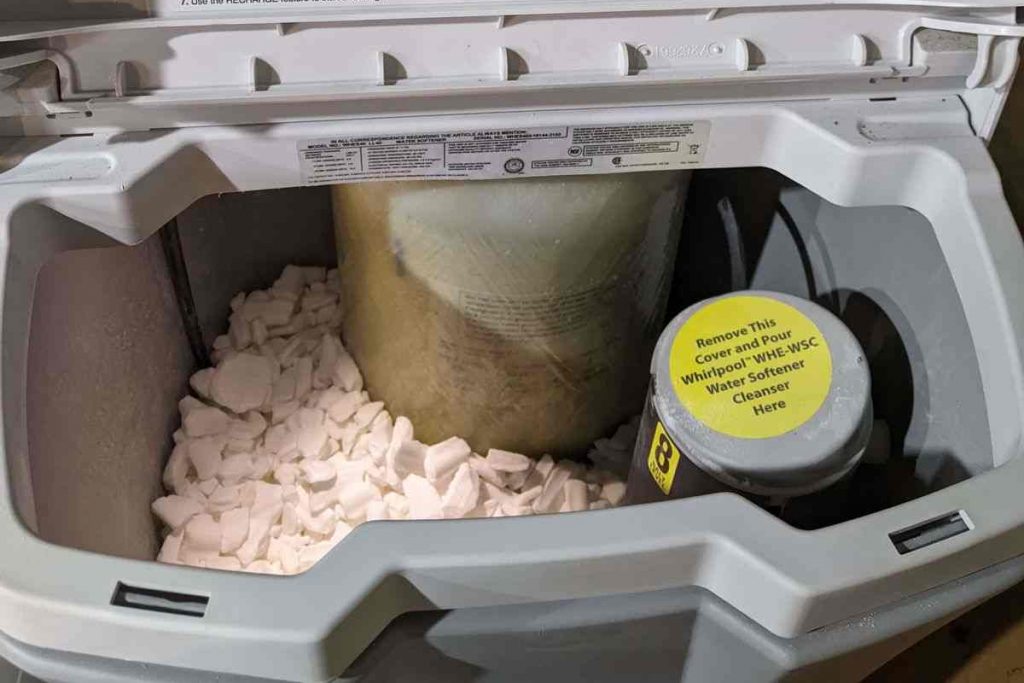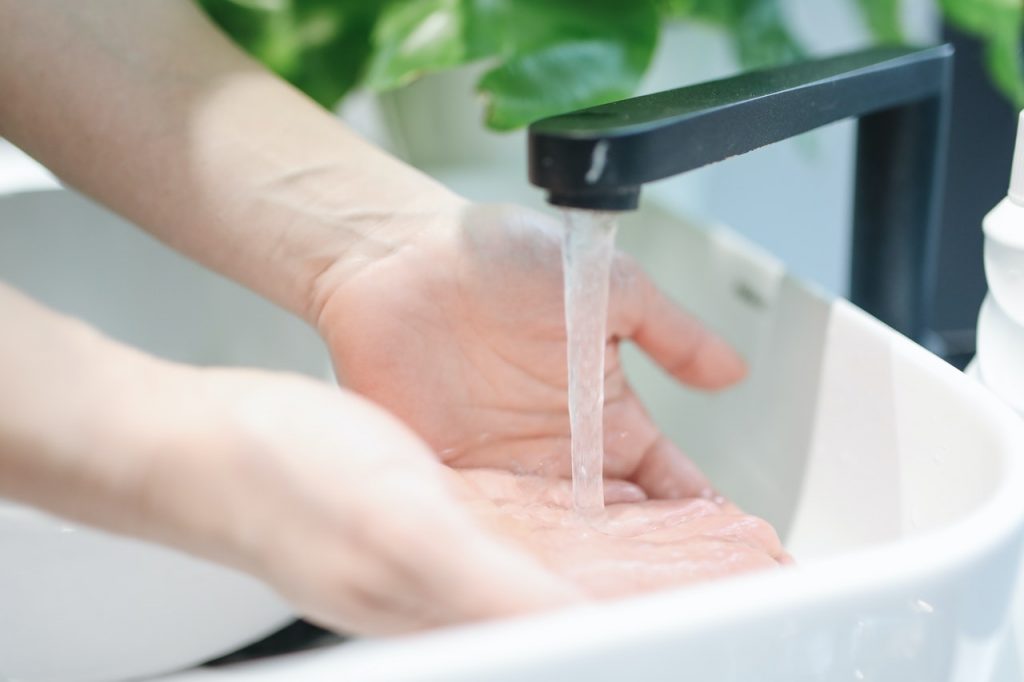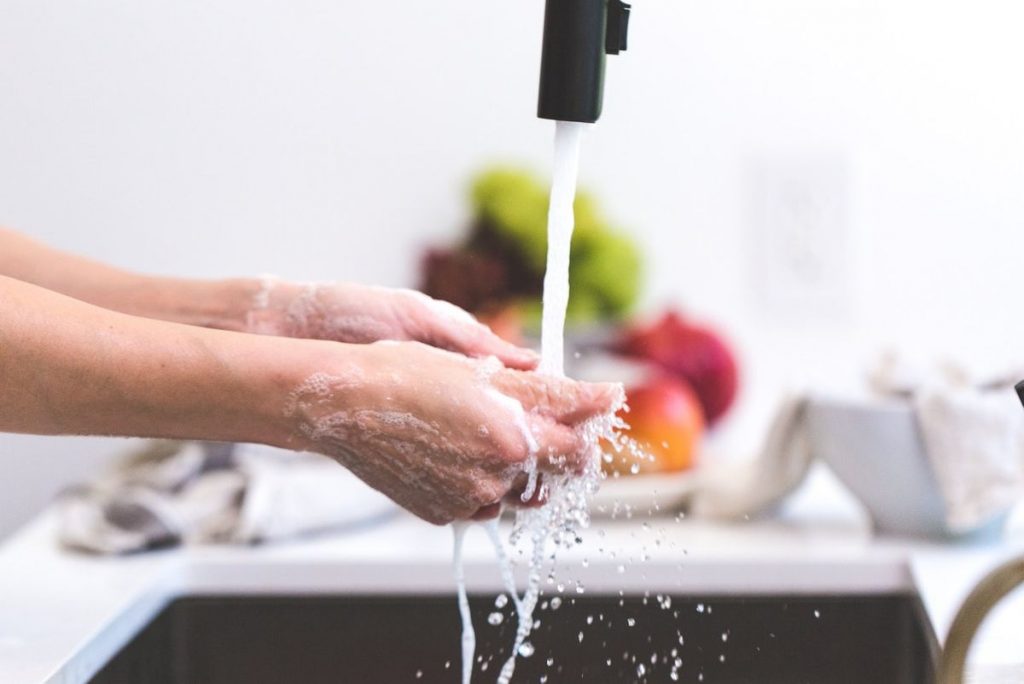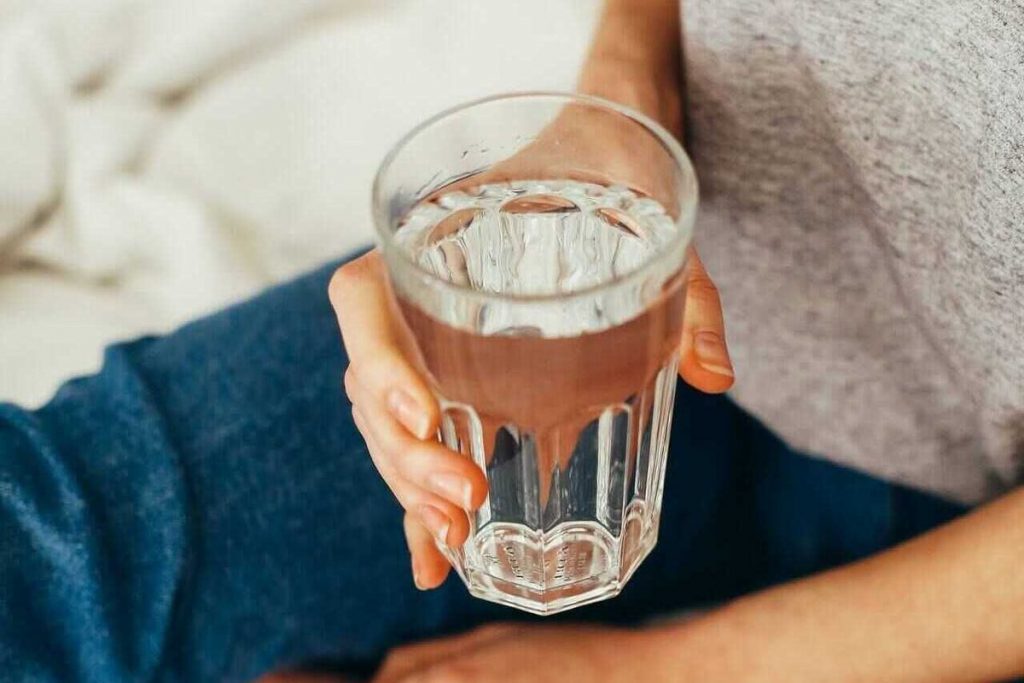If you’re like most of us who own a water softener, you probably don’t think about it too much until there’s a problem. And by then, it’s something that could have been prevented with regular maintenance. In this post, I’ll give you 8 tips on how to maintain your water softener and extend its lifespan.
So whether you’re a homeowner or homesteader who relies on a water softener to keep your plumbing safe and your family healthy, check out this post for some tips on getting the most out of your water softener!
1. Check your tank’s salt level
This is the most important tip and, really, the only regular maintenance you need to do. Make sure you are at least checking that your brine tank is filled up with enough salt to maintain a brine solution at the bottom. Fortunately, most water softeners have a display light that starts blinking when the salt is low, which makes it easy to monitor. You should still check it periodically to be sure!
This is a great video showing when to add salt to your brine tank and what it should look like. He also goes over salt bridges and how to prevent them from forming. We will get to salt bridges later!
2. Use high quality salt
Make sure you use high quality salt when it comes to refilling your brine tank. Thankfully, most water softener salt is pretty cheap. We don’t go out of our way to get the most expensive salt on the market, but we make sure to use a good quality evaporated salt.
Avoid using rock salt or block salt unless your water softener specifically requires it. It’s generally the cheapest and most impure type of salt and can dirty up your tank over time.
Your water softener manual will tell you what kind of salt your machine runs on.
3. Program your settings for your home’s water usage
The four main settings on your water softener are the regeneration cycle time, regeneration cycle frequency, regeneration cycle length and salt dose. As you can see, the majority of the settings are related to the regeneration cycle.
Related post: How Do Water Softeners Work?
Your water softener is passively letting water flow through the system most of the time and really only “does something” when it’s time to flush all the minerals out of the resin tank.
Fortunately, if you have your water softener installed by a professional (you always should!), they will likely take care of the settings for you and you won’t have to change anything. However, if your water softener is on and your water is still hard, you may have to tweak the settings a bit.
This is not meant to be professional advice at all – it’s just from my experience with ours: to figure out if you need to change the settings, I would suggest first looking at the salt dosage if your water softener is regenerating properly at least once a week and at a time where your household doesn’t use a lot of water and won’t be disturbed by any noises (ours regenerates in the middle of the night and the softener is in the basement away from our bedroom so we don’t hear anything). Run your water softener through a manual regeneration cycle (heads up that it can take at least 30-60 minutes and you should try not to use water during this time because the incoming hard water will bypass your softener), test your water’s hardness right afterwards, and if it is still hard, try upping the salt dosage a bit and going from there.
4. Clean your brine tank annually
I recommend cleaning out your brine tank once a year. Add it to your list of spring chores if you want. If you leave it for too long, sludge can form at the bottom of your tank and become a huge pain to get rid of.
This video provides a quick and easy explanation of how to clean out your brine tank.
You’ll need to remove the brine from the tank and have a place to dump it without harming your yard. If it sounds like too much of a pain for you to deal with, you can always schedule a professional to come in to clean your tank for you and make sure that everything is working correctly.
To be totally honest, we have had our water softener for about three years now and have not cleaned the brine tank yet. Writing this post is a good reminder for me to get on this! Cleaning it annually is the best way to do it, but this is totally up to you and your situation. If your water softener runs low on salt and you can see a residue forming at the bottom of the tank, it is definitely time to give it a nice clean! There are also special water softener cleaners you can add into the brine tank, which will help extend the lifespan of your resin beads.
5. Clean the nozzle and venturi valve
The venturi and nozzle are part of the system that moves the briny, salty water into the resin tank during regeneration. Because the venturi valve is frequently in contact with high concentrations of salt, it can become blocked and cause your softener to stop working properly.
Quick FYI – just in case you didn’t know, the briny water does not come into contact with your household water supply! The water softener has a bypass valve that cuts off your water supply during this process. A properly functioning water softener will not make your water taste salty.
Cleaning the nozzle and venturi requires taking some pieces apart. If you aren’t comfortable with this, you can certainly call in a pro to service your water softener every few years or so and take care of this for you. If you are interested in doing it yourself, check out this video below – he uses a plastic fork as his “special tool!”
6. Break up salt bridges
A salt bridge is simply a layer of salt that crusts over the brine tank and prevents the salt you pour in from coming into contact with the water at the bottom of the tank. Using quality water softener salt will prevent this from happening in most cases. If your water softener is running but your water is still hard, checking for a salt bridge is the easiest and fastest troubleshooting step to do first. If your salt level is low enough, poke it with a broom handle to break it up. Pouring some hot water over the bridge makes it easier.
If you are using good quality evaporated salt and are still having problems with salt bridges, don’t fill your softener all the way to the top and let the salt level drop lower between refills. Cleaning your brine tank is a good idea as well!
7. Avoid salt mushing
Remember that sludge we were talking about in #4? That’s not just a minor annoyance; it can actually become a serious problem.
Salt mushing happens when dissolved salt recrystallizes at the bottom of the brine tank and forms a thick sludge. This can prevent the regeneration cycle from running properly, not only preventing your hard water from being softened but also creating blockages in the components. If your water softener seems to be running properly but your water is still hard, first check for a salt bridge by poking around with a broom handle. If nothing breaks up when you push on it, it could potentially be salt mushing. Another reason why buying good quality evaporated salt pellets is so important!
8. Refresh your resin tank
“But isn’t that what the regeneration cycle does?” you might ask. You’d be exactly right, but over time, resin beads gradually lose their effectiveness as they get tarnished by heavy metals and other organic compounds. Fortunately, you can expect to get at least seven years out of a tank of resin beads if not more.
To keep your resin beads in top shape and maximize their lifespan, it doesn’t hurt to use a water softener cleaner every few months. You just pour the cleaner into the brine tank and run a manual regeneration cycle – your water softener manual will give you the recommended amount to use.
Conclusion
By regularly checking your salt level and periodically giving your water softener a checkup, you’ll ensure that your water softener is running smoothly and efficiently. We know the effects hard water can have on your health and home. If you are new to homesteading or if you bought an old farmhouse that runs on well water, you’ll want to invest in a good quality water softener and extend its lifespan as much as possible!
Interested in learning more about water softeners and homestead water sources? Check out some of the related posts below!





